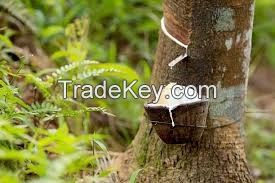

FOB Price
Get Latest Price( Negotiable )
|23 Tonne Minimum Order
Country:
Nigeria
Model No:
-
FOB Price:
( Negotiable ) Get Latest Price
Place of Origin:
Lagos
Price for Minimum Order:
-
Minimum Order Quantity:
23 Tonne
Packaging Detail:
sackd
Delivery Time:
3 weeks
Supplying Ability:
-
Payment Type:
T/T, L/C, Western Union, Money Gram
Product Group :
Nigeria
Contact Person Ekaete
Lagos, Lagos
When people talk about "rubber", they don't usually specify
what kind. There are many different kinds of rubber, but they all
fall into two broad types: natural rubber (latex—grown from plants)
and synthetic rubber (made artificially in a chemical plant or
laboratory). Commercially, the most important synthetic rubbers are
styrene butadiene (SBR), polyacrylics, and polyvinyl acetate (PVA);
other kinds include polyvinyl chloride (PVC), polychloroprene
(better known as neoprene), and various types of polyurethane.
Although natural rubber and synthetic rubbers are similar in some
ways, they're made by entirely different processes and chemically
quite different.
Natural rubber is made from a runny, milky white liquid called
latex that oozes from certain plants when you cut into them.
(Common dandelions, for example, produce latex; if you snap off
their stems, you can see the latex dripping out from them. In
theory, there's no reason why we couldn't make rubber by growing
dandelions, though we'd need an awful lot of them.) Although there
are something like **0 plants in the world that produce latex, over
*9 percent of the world's natural rubber is made from the latex
that comes from a tree species called Hevea brasiliensis, widely
known as the rubber tree.
| Country: | Nigeria |
| Model No: | - |
| FOB Price: | ( Negotiable ) Get Latest Price |
| Place of Origin: | Lagos |
| Price for Minimum Order: | - |
| Minimum Order Quantity: | 23 Tonne |
| Packaging Detail: | sackd |
| Delivery Time: | 3 weeks |
| Supplying Ability: | - |
| Payment Type: | T/T, L/C, Western Union, Money Gram |
| Product Group : | Agriculture |